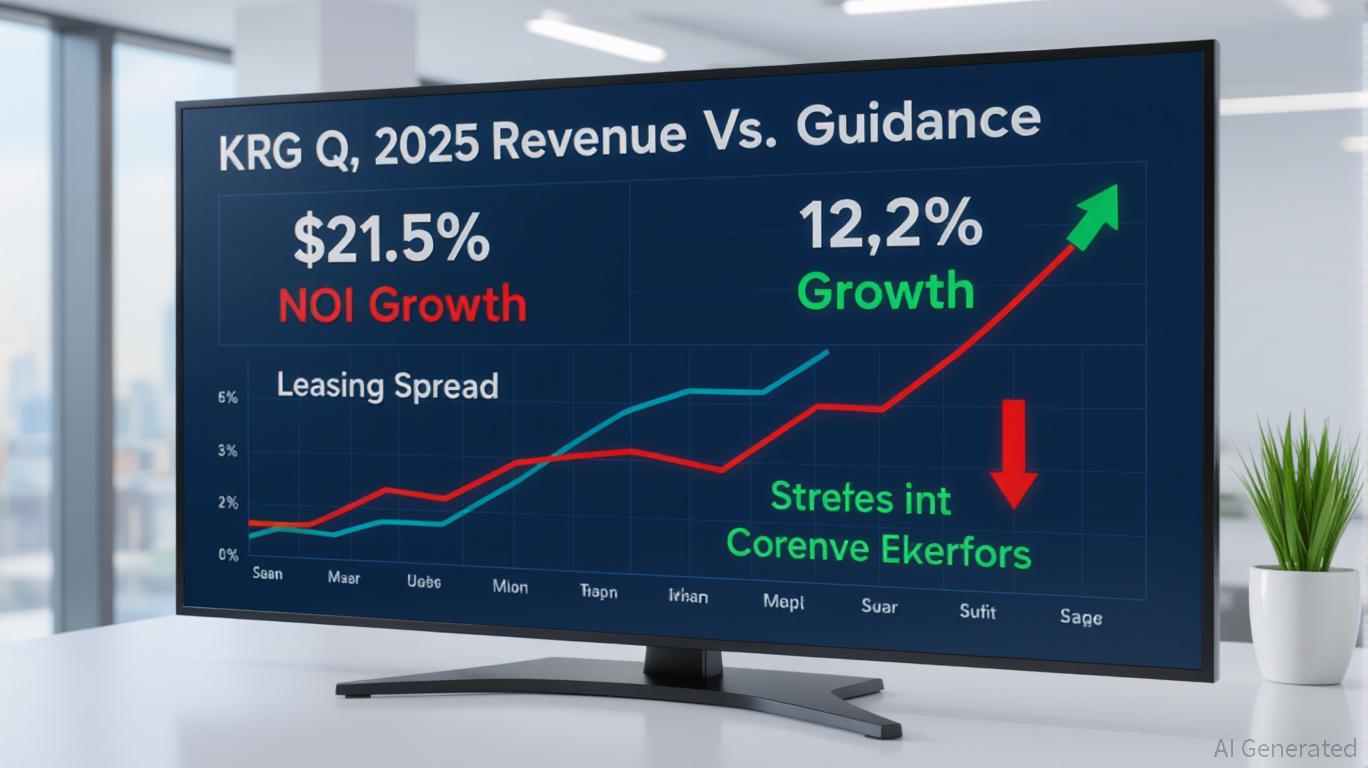Bitcoin News Today: Traditional Finance Liquidity Changes Fail to Impact Bitcoin Despite Trade Agreement
- U.S.-China trade deal announced Nov 1, 2025, failed to move Bitcoin’s price amid stable $110,000 range. - Analysts attribute Bitcoin’s flat performance to TradFi dominance in liquidity, shifting from retail speculation to institutional stability. - Trade deal’s supply chain reforms and stablecoin growth (e.g., Western Union’s USDPT) may indirectly boost Bitcoin liquidity long-term. - Provisional agreement terms (expiring by late 2026) and geopolitical risks limit immediate crypto market reactions despite
The historic trade pact announced between the United States and China on November 1, 2025,

The details of the U.S.-China trade pact, outlined in a
Market observers attribute Bitcoin's steady performance to evolving market conditions. "We're witnessing a transition from early adopters who thrived in volatile times to a new wave of traditional finance participants who favor stability," one analyst noted in a recent publication. This shift indicates that long-term holders are selling to institutions seeking less risky, more stable assets. The pattern mirrors broader financial trends, as established financial firms increase their Bitcoin exposure while retail speculation declines.
The broader economic effects of the trade deal could indirectly impact Bitcoin, particularly through the integration of stablecoins and traditional finance.
At the same time, the trade pact's emphasis on agricultural and industrial supply chains may influence crypto demand in sectors such as logistics and energy. For example, U.S. soybean growers could see gains from China's pledge to buy 25 million metric tons annually, potentially boosting business revenues and reducing uncertainty. Still, these macroeconomic shifts tend to affect Bitcoin's price indirectly or with a delay, as it remains more responsive to monetary policy and institutional investment patterns.
Importantly, the temporary nature of the agreement—with many provisions set to lapse by late 2026—adds to market unpredictability. While the deal offers short-term relief from trade disputes, its long-term effectiveness is uncertain, discouraging bold moves in both stock and crypto markets. This caution is further heightened by global geopolitical issues, such as
Looking ahead, Bitcoin's direction will likely be shaped by stablecoin activity and institutional participation. The Stablecoin Supply Ratio (SSR), which compares Bitcoin's market value to stablecoin reserves, has reached levels historically associated with bearish sentiment, hinting at a possible price floor. However, confirmation will depend on continued capital inflows and further development of traditional finance infrastructure, such as
Disclaimer: The content of this article solely reflects the author's opinion and does not represent the platform in any capacity. This article is not intended to serve as a reference for making investment decisions.
You may also like
Kite (KITE) Price Forecast and Market Outlook After Listing: Assessing Value, Institutional Engagement, and Near-Term Volatility Concerns
- Kite Realty (KRG) reported $4.82M Q3 2025 revenue shortfall despite 2.1% NOI growth and 12.2% leasing spreads. - Institutional ownership at 90.81% with $1.2B liquidity supports strategic grocery-anchored retail focus showing 56% leasing spreads. - Analysts cut price targets to $23-$26 while industry faces "F" rating due to macroeconomic risks and lack of sustainable earnings.

MMT Token TGE: A Major Debut with Notable Market Influence and Distinctive Tokenomics
- Binance's Momentum (MMT) TGE on Nov 4, 2025, saw an 885% price surge to $0.8859 within hours. - The TGE followed a 376x oversubscribed Binance Prime sale and included a 0.75% airdrop to BNB holders. - MMT's hybrid tokenomics combine inflationary potential with deflationary buybacks (20% marketplace fees, 15% quarterly profits). - Cross-chain strategy (BSC/Sui) and real-world asset integration aim to attract institutional/retail investors despite inflation risks.

Hyperliquid News Today: Hyperliquid's BLP and HIP-3 Indicate a Fundamental Change in DeFi Structure

Aster DEX Experiences Rapid Growth: Advancements in On-Chain DeFi and Improved User Access Attract Institutional Attention
- Aster DEX's 2025 upgrades transformed ASTER token into functional collateral for perpetual trading, enabling $800 leveraged positions per $1,000 ASTER. - Institutional validation followed CZ's $2M ASTER purchase and Coinbase's roadmap inclusion, coinciding with 30% price surge and $2B 24-hour trading volume. - 5% fee discounts and cross-chain expansion (BNB Chain, Ethereum , Solana , Arbitrum) enhanced accessibility, creating a flywheel effect through token retention and liquidity diversification. - $5.4
